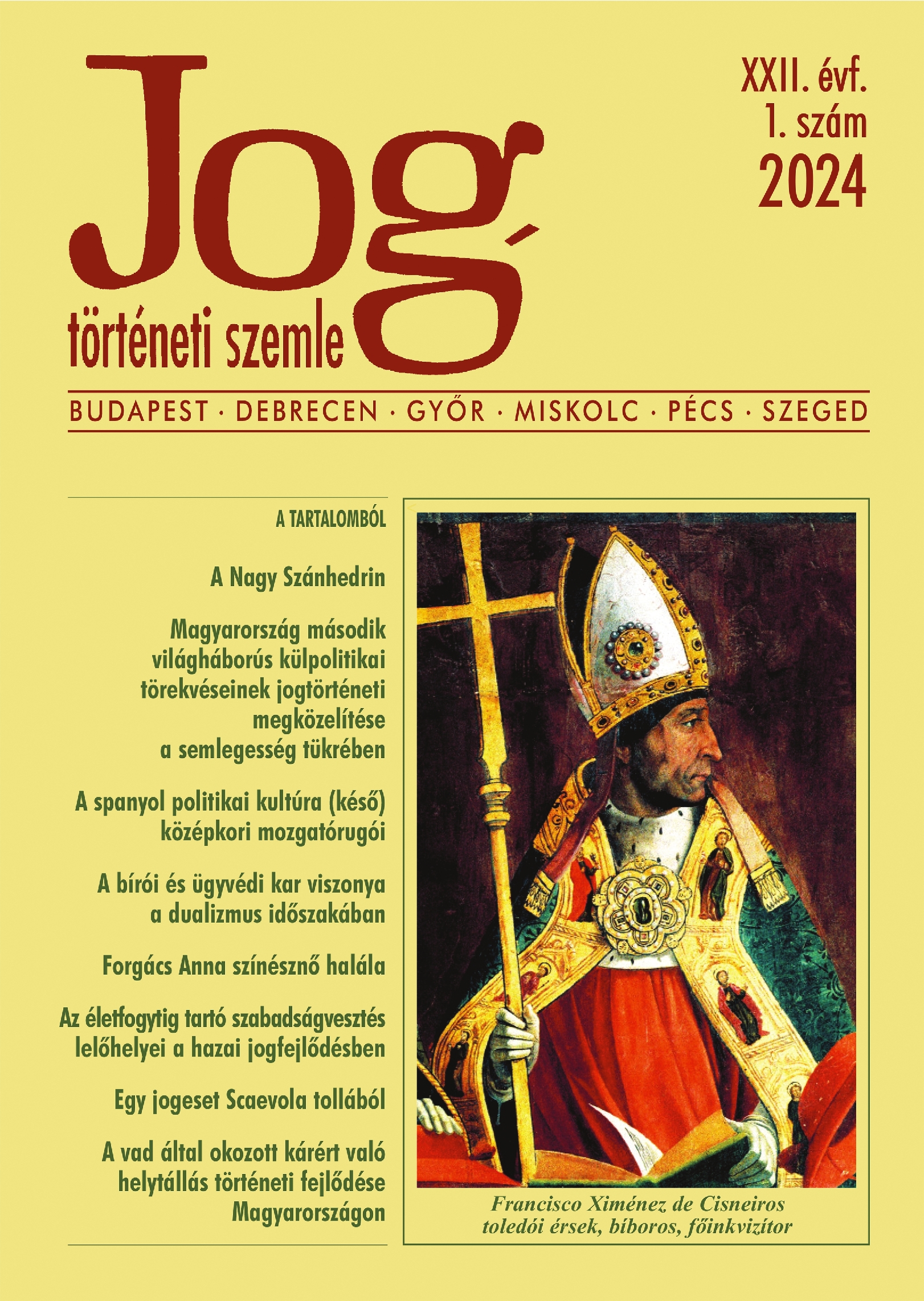Heredes Seiae signum ponere compellendi sunt
A legal case from Scaevola
DOI:
https://doi.org/10.55051/JTSZ2024-1p59Abstract
My paper discusses an ancient Roman legal case preserved by Digesta. The passage Scaev. D. 34, 2, 38, 2 recounts how Seia, a wealthy woman, instructed her heirs in her will to erect a statue of a deity in a temple of her choice. However, one question remained unanswered: what metal should the statue be made of: gold, silver or bronze? The jurist Quintus Cervidius Scaevola argued that it should be made of silver. In my paper, I will summarise the legal and non-legal arguments that may have led to the choice of silver as the material for the statue, taking into account, among other things, the Mediterranean customs of gifts-giving to sanctuaries, the value of the different precious metals, their ratio to each other, and the testator's intentions as indicated in the will. The importance of the case is underlined by the fact that very few ancient archaeological finds, and even fewer legal texts, have survived which focus on similar issues concerning bequests to sanctuaries. Unfortunately, the statue in question has not survived, but the testamentary provision preserved in the Digesta provides a timeless reminder of Seia's generosity.






